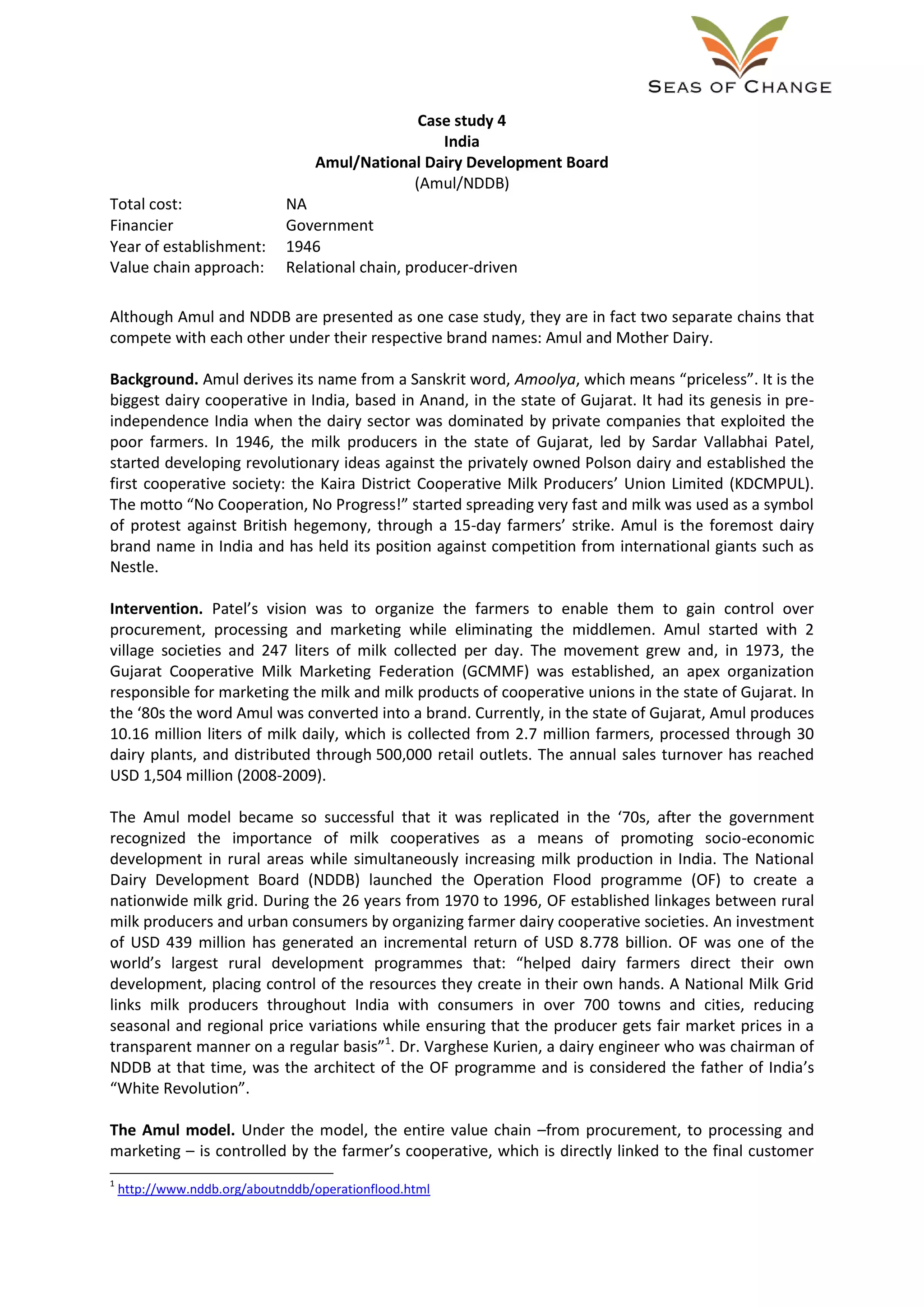The Amul/NDDB case study summarizes the dairy cooperatives in India. It describes how Amul began in 1946 as a cooperative movement against private milk companies. Led by Sardar Vallabhai Patel, dairy farmers organized to gain control of the supply chain. Amul is now the largest dairy cooperative in India, collecting over 10 million liters of milk daily. In the 1970s, the National Dairy Development Board launched Operation Flood, which replicated the Amul model nationwide through dairy cooperatives. This helped integrate rural milk producers with urban consumers across India. The Amul model gives farmers ownership and control over the entire value chain from production to retail.



